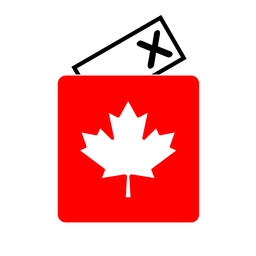As a foreigner who follows the Canadian news I saw on https://www.ctvnews.ca/business/economists-expect-rise-in-inflation-as-price-growth-fight-enters-new-phase-1.6517322 that the Canadian inflation rate is 2.8% which surprised me as in our country it is around 7%.
If so then how did Trudeau do it? How did he soak up all the money he printed during Covid?
Does that mean that housing and cost of living pressure has also been eased?
Would like to know your thoughts.
If so then how did Trudeau do it? How did he soak up all the money he printed during Covid?
Oddly enough, the money was given to people who generally re-inject it into the economy. It’s not that it canceled out the expense, but a combination of allocation and a hefty amount of confidence in the reverse-trickle-down (which actually does work) effect brought the inflationary slippage within range where it was corrected within only a few years with an economy growing stronger before the shutdown.
We did a less-worse thing and also got super lucky. Comically, the Oranges would have handed out too much and damaged us for longer, and the cruel blues would have given no one anything and risked our safety to boot, so I have to admit the second-worst political party possible actually did the least-worst plan.
Also worth noting that while getting inflation under control is a good thing, people won’t feel the relief for a bit yet. Getting inflation lower doesn’t mean prices are going to drop to what they were last year, it means they’ll only go up a little this year instead of a lot. Since wages tend to lag behind cost of living, at least for the majority of the working class, it’ll be a while yet for people to settle in to their new financial situation.
Who’s getting raises to match costs though? I’m in construction and they’re “desperate” for people, but haven’t raised rates for years. We actually went through two rounds of pay rates reduced by 10% in 2016-17. I’m earning 20% less than a did a decade ago, and they’re “desperate” for me to give them all sorts of freebies, while I barely get half time for hours. The economy is a mess.
The way they calculate it is not very realistic. Housing and I think groceries are somehow not weighted very heavily in the calculations. Groceries have doubled in the last few years so there is no way the number is accurate.
Canada systematically under-reports inflation similar to the way they do in the US. But it’s been that way for decades and their methods haven’t changed recently so far as I know, so changes in the reported rate are still meaningful.
But it’s reported monthly at an annualized rate. When they say 2.8% annual inflation, that doesn’t mean it hasn’t been much higher than that over the past year. Only that in that one month it was measured at a rate that would hypothetically add up to 2.8% if it continued for a whole year. When things are changing rapidly, one month’s number might be less meaningful than usual.
It doesn’t have to be all that realistic. All you are trying to determine is how the value of the currency has changed over time. Groceries tend to be especially volatile in their own value (fruits and vegetables can be less valuable during harvest, for example), which can mask the change in value on the other side of the equation. But at the same time groceries are great because everyone buys them regularly, which is exactly what you need to understand how their perception of the value of the currency is changing. Something people only buy once in their life would be completely useless. So, you seek some kind of balance in its inclusion.
It will never be perfect, but perfect need not be the enemy of good. And, in reality, economists will look at many different ways of calculating inflation when doing economisty things anyway. Headline inflation is just that – for the headlines.
The right is very quiet.
Canada has been doing pretty decently when compared to other countries. It’s not all about pandemic spending. Challenges on the supply side have had a huge impact globally (e.g., chip shortages, production slowdowns in China, fuel prices).
If there are supply side shortages wouldn’t that make the inflation rate higher? I would imagine it would at least affect the PPI as import shortages impact supply prices and that could still trickle through to the CPI.
Sorry, I misread your initial post. There are a number of factors that can lead to differences including the overall structure of the country’s economy (e.g., being more resource-based), how fiscal stimulus is spent, what supply chains are impacted and the extent, trading relationships). For Canada, a significant factor is the Bank of Canada, which is kept at arm’s length from Government with a focus on monetary policy. They have a lot of interesting publications - and some regular reporting: https://www.bankofcanada.ca/publications/mpr if you’re interested in digging in.
Canada is pretty sensitive to interest rates right now, since we’re all so deep in consumer debt.
So interest rates have also come down?
Interest rates increased at the last cycle. Opinion is split if they will increase again in September.
It is likely they will.
Debt becomes more attractive when inflation is high. If, hypothetically, $1 yesterday is worth 80¢ today (inflation), then you just saved having to pay back 20¢ on every dollar of the principal. That is one hell of a steal! As such, rates rise to compensate. If higher interest rates now require you to pay 20¢ more for every dollar then that debt is not so attractive again. This keeps the supply and demand in equilibrium.
But since higher rates are specifically what is driving inflation (we are in the target range if you exclude mortgage interest costs), the higher the rates, the higher inflation goes. With that, the equilibrium is struggling to be found.
And this is what we call an inflationary spiral.
Not yet, no. I’ve heard from people who seem like they should know about such things that it should be expected soon.
StatsCan uses an odd assortment of consumer goods to track inflation, which doesn’t really reflect what pressures consumers are facing in Canada, I’d hazard a guess it’s likely closer to 5%.
Housing and cost of living issues are very much still at the forefront of most Canadians’ mind, barring the wealthy. The federal govt has done nothing of note on either issue, and I’d posit that they’re likely to get hit pretty hard from both sides come election season. I’m personally aghast that our federal govt is willing to accept such a huge leap of unhoused Canadians while those in power sit on their hands.
StatsCan uses an odd assortment of consumer goods to track inflation, which doesn’t really reflect what pressures consumers are facing in Canada
Makes sense. Inflation only cares about the change in value of the dollar, not the sum total of the change in value of the dollar and the change in value of the good being purchased. It is decidedly not a cost of living index.
If, for the sake of illustration, the value of bacon is up 50¢ and the dollar has declined in value by 50¢, your cost to buy bacon is now up $1 – but inflation would only be interested in the 50¢ on the dollar side of the transaction. The increase in value of the bacon is irrelevant to dollar inflation.
It’s up to 3.3% overall. It would have jumped higher, except gas prices fell further last summer.
Grocery inflation is still high:
Canadians are still seeing grocery prices soar. Grocery prices in July were up 8.5 per cent from a year ago, slower than June’s 9.1 per cent.
Statistics Canada said that’s largely due to smaller price increases for fruit and bakery goods.
Mortgage costs remain high, due to rising interest rates:
Mortgage interest costs posted another record year-over-year increase in July, rising by 30.6 per cent.
Rent was up 5.5 per cent compared with the previous year, a smaller increase than in June.



